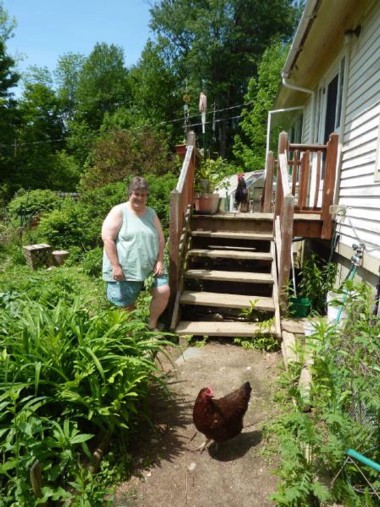The 54-year life of the Mt. Tom power station, a coal-fired power plant that was once a major source of energy in the Valley and long a major source of pollution, will reach its end in October, just two months before the Vermont Yankee nuclear power plant near Brattleboro is scheduled to close.
Though campaigns to get the plant shut down have gone on for years as the state logged hundreds, then thousands of violations of the Clean Air Act against it, in the end it wasn’t so much for environmental as for economic reasons—the increasing availability in the region of cheaper natural gas—that the plant’s most recent owner, GFD Suez of France, decided to close it down. (Competition from natural gas was also among the reasons for the plan to shutter Vermont Yankee.)
But increasing reliance on natural gas as older coal-fired and nuclear plants close creates a grim environmental paradox in Massachusetts, where the increasingly well-documented environmental damage caused by fracking—the injection of layers of rock with water and chemicals under high pressure, the process used to extract the gas—has given rise to widespread aversion and exercises in the writing of anti-fracking legislation.
No fracking is taking place in Massachusetts, but the natural gas being offered for sale in and transport through Massachusetts is obtained by fracking elsewhere—a fact that has spawned angry resistance to the expansion of natural gas pipeline systems through the state.
Close to the heart of that resistance—off a back road in Cummington—lives Rosemary Wessell, a graphic artist and homesteader who believes that fracking has gone far enough. Wessell represents a growing number of people in the Valley and beyond who are making a strong bid to be heard as the state defines its energy future. “[The gas people] say, ‘We’re not fracking here,’” she says. “But what’s the difference?”
On a six-acre homestead carved from a forest of ash, poplar and moose maple, Wessell and her partner Wendy Sawyer raise chickens, draw water from a well, keep an organic garden and forage for wild mushrooms, dock, plaintain and other edible plants in their yard and the surrounding woods.
Wessell moved to Western Massachusetts from Brattleboro, where she grew up just outside the Vermont Yankee nuclear power plant’s five-mile “Danger” line. Later she lived for a few years in Westfield, where, she says, “We would hear the gas pipes rattle. Sometimes it sounded like an explosion, and we would all come out and check: ‘Is everyone OK?’ One of the reasons I settled in Cummington was that I didn’t want to have to worry about big industrial energy projects, and now there’s this pipeline.”
The pipeline is the line proposed by Tennessee Gas Pipeline Co. and its parent company, Kinder Morgan, to carry fracked gas from New York State through the Berkshires and Western Massachusetts to Dracut, near Boston. Wessell and Sawyer are the founders of No Fracked Gas in Massachusetts, and their website and Facebook page have become rallying platforms for local landowners unwilling to let their land be surveyed by Tennessee Gas, towns writing resolutions to keep the pipeline out, even activists from other states.
“We have people from Pennsylvania that have joined the group,” said Wessell, adding that some of them “have had to have water trucked in” because of damage to local water supplies caused by fracking.
The movement to expand natural gas use and transport in Massachusetts, encouraged by a call for more energy from the six New England governors early this year, not only trades the old environmental hazards of coal-fired plants like the Filthy Five for new environmental hazards, but is unnecessary, says Wessell. She cites a study by ISO New England, manager of the regional electric grid, showing that a net 700 megawatts of power will be lost when Vermont Yankee and all the oil- and coal-fired plants in Massachusetts have been shut down, and points out that that amount would more than be made up for by the 1,600 megawatts of solar power and 2,000 megawatts of wind power Gov. Deval Patrick has called for by 2020.
The paradox of reliance on gas obtained by environmentally risky methods, then, is not only ugly, says Wessell; “It’s a false paradox as well.”
The Mt. Tom plant, long notorious as one of the “Filthy Five”—the five dirtiest electric generating stations in the state—won’t be mourned by those living under the beautiful mountain in the Holyoke Range, where the light on the plant’s very visible tower blinks sleepily at night to warn away low-flying aircraft. Some of its neighbors have been plagued for decades by asthma and other health problems aggravated by hydrochloric acid, mercury and other pollutants that spewed from the plant in volumes totally nearly half a million pounds a year under previous owners (the plant has been a GDF Suez property since 2008).
It’s certainly the case that the closure of the Mt. Tom plant will not create a need for a large energy source to replace its contribution to the regional grid. Between 2009 and 2012 the plant, which was designed to power 120,000 homes, had its hours in operation cut by more than 80 percent. “The plant has not been operating very much, and so its coming off line shouldn’t have any significant effect on the grid,” James McCaffrey of Beyond Coal Massachusetts told the Advocate. GDF Suez has announced that it will consider turning the plant into a source of solar electricity, an idea broached as early as 2010 by the local environmentalist coalition Action for a Healthy Holyoke.
A solar-powered electric plant on the site of the Mt. Tom power station would give a significant boost to Massachusetts’ alternative energy future. The state now has 464 megwatts of solar electric capacity, 237 megawatts of which were installed in 2013 alone. “We’re not saying ‘No gas,’” says Wessell, “just don’t add more to the picture now. We’re standing at the threshold of a green energy economy.”•



